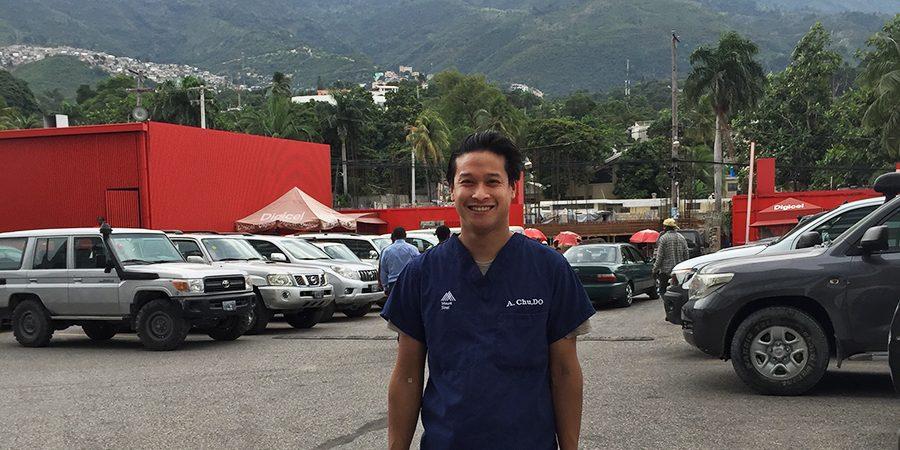Notes from the Field: Providing Health Care & Hope in Haiti


The Institute operates three family medicine residency programs and each resident volunteers with a community organization outside of their work hours. So, once a month a resident will share a story “from the field” here on the blog. Up first is Anthony Chu, DO, a third-year resident at our Harlem Residency in Family Medicine, who recently spent a week providing health care to people in Haiti through Project Medishare at Hospital Bernard Mevs.
“Can we get a nasal cannula on her please?”
The staff knew Mrs. M well, because she’d been admitted multiple times over the past year for “breathing issues.” Mrs. M’s current admission to the medical/surgical ward was for a seemingly uncomplicated bacterial pneumonia – which was confirmed by a chest x-ray on admission. And she was already on Rocephin and Flagyl (the standard cocktail for everyone at the hospital), which predated my arrival in Port au Prince, Haiti by three days. With her oxygen saturation dropping into the mid 60’s, I quickly asked my nurse to place Mrs M on oxygen. After a few minutes of adjusting the tank, I rechecked her vitals which were still dangerously low. Another minute of futilely increasing the amount of oxygen went by before I remembered what I had read in the visiting doctors’ hospital training manual earlier during breakfast: “If the patient de-saturates, check the oxygen tank. It’s most likely out of oxygen.” I shook the tank to confirm that there was indeed no oxygen in the oxygen tank.
“Can we please get another oxygen tank?” I asked my nurse.
As I sat Mrs. M upright and hastily listened to her lungs, my mind raced to think of the vast differential of emergent medical conditions that could be causing her to slip into respiratory distress.
“Tension pneumothorax? Aspiration? Shock? Trauma? Infection? Loculated pneumonia? Heart failure exacerbation… No rhonchi, no wheezing. Bilateral breath sounds. Bilateral rales in the lung bases…” I thought quietly to myself.
Within 2 minutes, the tech had lugged the new oxygen tank into the room and quickly changed the line. A repeat reading of her oxygen levels did not sit well with me. Despite being admitted and treated for pneumonia, my clinical exam of Mrs. M was consistent with an acute heart failure exacerbation. I treated her with a non-rebreather mask and gave her 40mg of IV Lasix. Tomorrow, Mrs. M would ultimately breathe on room air.
Unlike home, there are no daily morning lab draws. No BNP, no CBC, the iSTAT machine is broken from what I heard. Labs are drawn after the patient has paid for them in full. The chest x-ray, which Mrs. M had on admission, would not be repeated. The medical care I provided at the hospital was not only a crash course in what my years of medical training had taught me, but also of the current state of Haitian healthcare. Constructed shortly after the 2010 earth quake, Hospital Bernard Mevs houses one of three CT scanners in the country. Medical equipment is sparse, if functional, and usually donated by visiting medical teams that volunteer weeks at a time throughout the year. Despite lacking what one would consider essential to daily care, the hospital community (both visiting and local health care providers, staff, patients and families alike) provided an unparalleled sense of hope for the city. Whether it be the parents of the patient that came daily to feed their now paralyzed son or the ICU nurse teaching the medical resident blood draws, the hospital’s dedication to the community is astounding. Throughout my week at Hospital Bernard Mevs, I witnessed so many incredible things and rediscovered the physician I had always wanted to become.